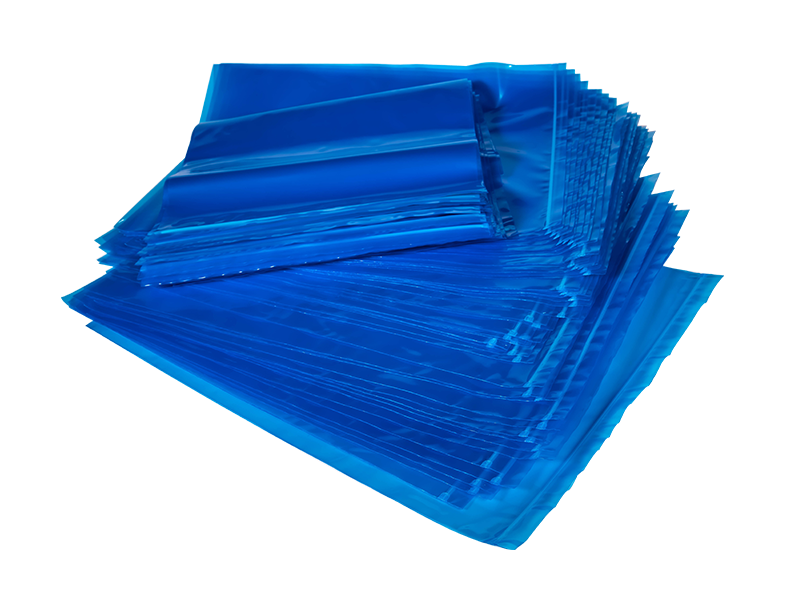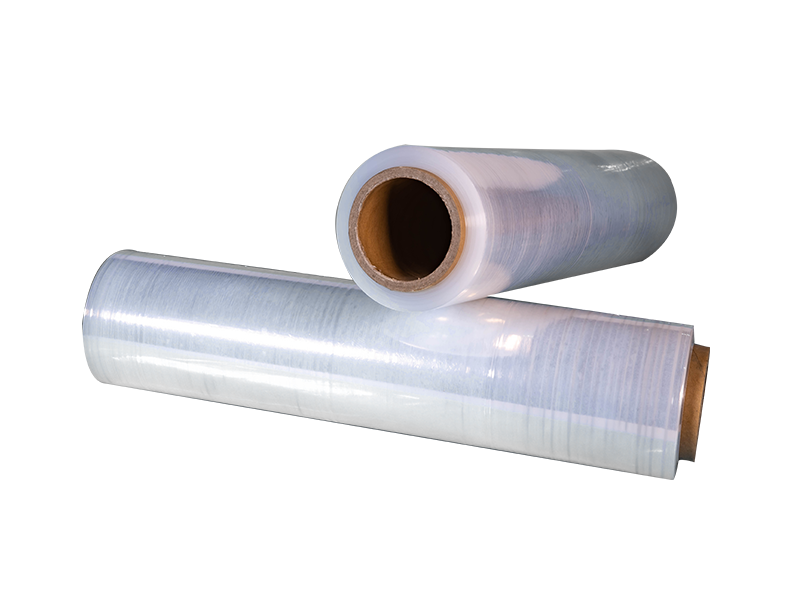Development and Sustainable Development Discussion of Vapor Phase Corrosion Inhibiting Plastic Films
Publication Time:
2020-08-20 16:33
1. Vapor Phase Corrosion Inhibition Principle for Metals
1.1 Metal Corrosion
Metal corrosion refers to the deterioration and destruction of metal materials due to chemical or electrochemical reactions with the surrounding environment. Based on the reaction mechanism, corrosion can be divided into electrochemical corrosion and chemical corrosion. Electrochemical corrosion refers to the destruction caused by electrochemical reactions between the metal surface and an ionically conductive medium; chemical corrosion refers to the destruction caused by direct chemical reactions between the metal surface and a non-electrolyte. Electrochemical corrosion is the most common and widespread type, as long as there is condensed water in the environment, metal corrosion will occur in the form of electrochemical corrosion.
1.2 Corrosion Inhibition Principle of Vapor Phase Corrosion Inhibitor (VCI) Plastic Films
The anti-corrosion effect of VCI plastic films is actually the anti-corrosion effect of the VCI agent using the plastic film as a carrier. VCI agents (also known as VPI) can directly vaporize (or sublime) at normal temperature and pressure. Under normal temperature and pressure and relatively closed conditions, the VCI agent utilizes its material properties and the differences in the molecular structure of the polymer resin to achieve sublimation. That is, the VCI agent migrates stably and uniformly inside the plastic film packaging, then vaporizes, and its vaporized and diffused gas gradually reaches saturation. The VCI agent will permeate and adhere to the surface of the metal products and the inside of the components within the plastic film packaging, forming a dense and transparent gaseous protective layer to prevent metal corrosion. Moreover, because the inhibitor molecules exist in a gaseous state, they have the function of penetrating everywhere. No matter how complex the internal and external shapes of the metal products are, the anti-corrosion gas can still effectively adhere to the inner and outer surfaces of the metal components, preventing the oxidation of the metal products, thereby achieving an ideal anti-corrosion effect.
2. Current Status of Vapor Phase Corrosion Inhibitor (VCI) Plastic Films
VCI plastic films are anti-corrosion packaging materials formed by adding corrosion inhibitors to plastic films in a certain way. Early on, coating-type anti-corrosion films were the main representatives. With the innovation of processing technology, the current mature VCI plastic film products are made by extrusion blow molding. That is, VCI is added in the form of micropowder to a polymer resin with good compatibility, and then made into VCI plastic masterbatch by extrusion granulation. This masterbatch is added to polyolefin resin, and then made into a film by extrusion blow molding. Currently, the commonly used method is to blow-mold plastic films of different specifications using anti-corrosion masterbatch and polyethylene (PE) resin, etc., through a certain process. For example, Suzhou Qiyang Anti-corrosion Technology Co., Ltd. uses its self-developed VCI masterbatch mixed with LDPF resin and uses an internationally advanced three-layer co-extrusion blow molding production line for blow molding.
At the end of the 1990s, China possessed independent intellectual property rights for the manufacturing of VCI plastic films, breaking the international technological monopoly and achieving the domestic production of VCI plastic films, which led to the rapid popularization and application of this material. With the continuous expansion of application fields, the performance requirements for VCI plastic films are also becoming more multifunctional.
The main types can be classified according to function and structure:
General multi-metal VCI plastic films: Products formed by uniformly dispersing VCI micropowder in plastic films, with a simple structure and the largest usage;
Anti-static type: Plastic films with anti-static functions formed by adding anti-static agents to general anti-corrosion films, mainly used for anti-corrosion packaging of electronic and electrical products and equipment with anti-static requirements;
Stretchable type: Films with ultra-high elongation, puncture resistance, and self-adhesiveness, suitable for close-fitting wrapping packaging of metal parts;
Shrinkable type: Heat-shrinkable anti-corrosion films, mainly used for the tight packaging of metal parts;
Reinforced type: Composite materials with high strength (such as tensile strength, puncture strength, tear strength, etc.) made by compounding high-strength materials, widely used in anti-corrosion packaging of heavy metal products;
High-barrier type: Films with high barrier properties made by multi-layer co-extrusion or lamination, such as aluminum-plastic composite anti-corrosion films. These materials have low moisture permeability and low gas permeability, and are especially suitable for long-term storage and anti-corrosion of high-precision and high-value-added products.
VCI plastic films have many characteristics that paper products do not have, such as transparency, aesthetics, waterproofness, oil resistance, good airtightness, recyclability, and environmental protection. They are widely used in the fields of electromechanical equipment, auto parts, and weapons and equipment.
3. Sustainable Development of Vapor Phase Corrosion Inhibitor (VCI) Plastic Films
3.1 Product Planning, Adhering to Sustainable Development
Safe, environmentally friendly, and sustainable products have been reflected in various fields of production and life. Implementing green packaging and conducting green design for products is the direction and focus of efforts in various countries around the world. As a representative of advanced anti-corrosion packaging technology, the green design of VCI plastic films should focus on selecting safe, efficient, and multifunctional VCI agents, selecting recyclable or biodegradable carrier materials, adopting innovative manufacturing processes, effectively recycling and reusing waste, and achieving the design goals of green VCI plastic film packaging.
3.2 Selecting Safe and Efficient Raw Materials to Create a Green Source
3.2.1 Selection of VCI Agents, Adhering to Diversification, High Efficiency, and Environmental Protection
There are many types of VCI agents. One substance from each category is listed below as an example:
Category
|
Corrosion Inhibitor |
Metals Affected |
Hazards |
Standalone Use |
Organic amines and their salts |
|
Hexamethylenetetramine (urotropin) |
Ferrous metals, aluminum alloys |
No significant toxicity |
Yes |
Organic acids and their salts |
|
有机酸及其盐类 |
3,5-dinitrobenzoic acid hexamethyleneimine |
Universal vapor phase corrosion inhibitor |
Yes |
Organic acids and their salts |
|
Nitrites |
Sodium nitrite |
Ferrous metals |
Toxic |
Organic acids and their salts |
|
Carbonates |
Cyclohexylamine carbonate |
Steel, cast iron |
Non-toxic |
Organic acids and their salts |
|
Heterocyclic compounds |
Benzotriazole |
Copper, silver |
Non-toxic |
Organic acids and their salts |
|
Chromates |
Cyclohexylamine chromate |
Steel, copper, aluminum, zinc |
Toxic |
Organic acids and their salts |
A single vapor phase corrosion inhibitor is not very effective and has a single effect. Combining different vapor phase corrosion inhibitors will have a better effect. For example, combining hexamethylenetetramine with sodium benzoate and sodium nitrite can combine the advantages of the three, making it suitable for a wide range of metals, with better corrosion inhibition effect and longer duration. According to national environmental protection requirements, the following substances are restricted substances in packaging materials: Cd cadmium, Pb lead, Hg mercury, Cr hexavalent chromium, polybrominated biphenyls, polybrominated diphenyl ethers, phthalates, polycyclic aromatic hydrocarbons, halogens, perfluorooctanoic acid salts and lipids, polyvinyl chloride, etc.
Based on the needs of environmental protection and sustainable development strategies, industrial corrosion inhibitors not only require good corrosion inhibition performance, but also require safety and environmental protection, without causing harm or adverse effects on the environment and humans. The research and development of environmentally friendly corrosion inhibitors is proposed. Cinnamaldehyde, benzoates, fatty acids, fatty amines, carboxylates, gluconic acid and its salts, amino acid derivatives, silicates, phosphates, etc. are all environmentally friendly vapor phase corrosion inhibitors.
3.2.2 Plastic raw material resin, insist on using functional and environmentally friendly materials
Common plastic raw materials and functions are shown in the table below:
|
Generic name |
Abbreviation |
Chinese name |
Common name |
Use |
|
Polyethylene |
PE |
|
Food packaging bags, tableware |
|
|
Polypropylene |
PP |
Plastic |
Microwave oven food containers |
|
|
High Density Polyethylene |
HDPE |
Hard plastic |
Cleaning supplies, bath products |
|
|
Low Density Polyethylene |
LDPE |
|
Preservation film, plastic film, etc. |
|
|
Linear Low Density Polyethylene |
LLDPE |
|
|
|
|
Polyvinyl Chloride |
PVC |
Polyvinyl chloride |
Plastic |
Rarely used in food packaging |
|
Polyethylene Terephthalate |
Polyester |
Mineral water bottles, carbonated beverage bottles |
||
|
Polybutylene Terephthalate |
Polybutylene terephthalate |
|
|
|
|
Polyamide(Nylon 6.66) |
Nylon |
|
||
|
Polycarbonates |
Polycarbonate |
Bulletproof plastic |
Water jugs, cups, baby bottles |
|
|
Polyacetal |
Polyacetal resin |
Delrin |
|
|
|
Polyphenylene oxide |
Noryl |
|
||
|
Polyphenylene sulfide |
Polyphenylene sulfide |
Polyphenylene sulfide |
|
|
|
Polyurethanes |
PU |
Polyurethane |
Polyurethane |
|
|
Polystyrene |
PS |
|
Noodle cups, fast food containers |
3.3 Packaging waste treatment, adhering to recycling, and sustainable development
Develop biodegradable plastic carriers. Use biodegradable resin materials as carriers for vapor phase corrosion inhibitors to produce biodegradable vapor phase rust-proof plastic films, eliminating packaging waste pollution from the source.
The recycling of packaging waste is currently one of the most important aspects of global green packaging and the circular economy. The recycling of rust-proof packaging has good economic and ecological benefits. Given the wide variety of vapor phase rust-proof plastic films, recycling should be carried out through classified collection and processing to facilitate reuse. Investment in technology and funding for the recycling and reuse of waste vapor phase rust-proof plastic films should be increased.
4. Prospects for the Sustainable Development of Vapor Phase Rust-Proof Plastic Films
Vapor phase rust-proof plastic films, as an emerging product and technology, are playing an increasingly important role in the field of metal corrosion protection. Under the requirements of environmental protection and sustainable development, vapor phase rust-proof plastic films will have the following development trends: Corrosion inhibitors for vapor phase rust-proof films will develop towards general-purpose, high-efficiency, non-toxic, and environmentally friendly directions. General-purpose vapor phase rust-proof film products suitable for multi-metal rust protection and free of harmful substances such as nitrites; towards diversified product structures, diversified forms, and diversified base resin materials, such as biodegradable vapor phase rust-proof films and polyvinyl acetate rust-proof films.
References:
[1] Zhang Daquan. Vapor phase corrosion inhibitors and their applications [M]. Beijing: Chemical Industry Press. 2007.5.
[2] Jiang Wei, Gong Min, Zhao Jinping. Research progress of natural plant green corrosion inhibitors [J]. Corrosion Science and Protection Technology, 2007, 19(4): 278-281.
[3] Sun Kai. Development trend and improvement direction of vapor phase rust-proof plastic film [Journal]. Plastic Packaging. 2014(3).
[4] Liu Hong, Tang Yanqiu, Shen Ping, Bai Fang, Zhou Xianliang, Zhao Baidong. Green design of vapor phase rust-proof packaging materials [Journal]. 2010.07.002.
[5] Wu Yinshun, Zheng Jiasheng. Electrochemical protection and corrosion inhibitor application technology [M]. Beijing: Chemical Industry Press. 2005.6.
Related News
VCI rust preventive paper - A new type of rust preventive packaging material
VCI rust preventive paper is a new type of rust preventive packaging material made by coating rust preventive base paper with volatile corrosion inhibitor (VCI).
How to use and precautions for anti-rust film bags
Rust preventive film bags are a new type of packaging material widely used in the packaging industry. They are specifically designed to prevent corrosion, oxidation, and contamination of industrial metal products during storage. The following is a detailed introduction to rust preventive film bags:
Detailed introduction to VCI rust preventive paper
VCI rust preventive paper (Volatile Corrosion Inhibitor Paper) is a special packaging material that protects metals from corrosion by releasing volatile rust preventive molecules (VCI). The following is a detailed introduction to VCI rust preventive paper:
High-end packaging solutions: A crucial element in building brand image
High-end packaging solutions, especially anti-rust film bags, are key to shaping brand image. Exquisite packaging not only protects product quality but also enhances consumer brand recognition. Let's explore this field together and discover the unlimited possibilities of high-end packaging!
Easy to Use: Packaging Techniques with PE Stretch Film
This article provides a detailed guide on using PE stretch film for packaging, making it easy for you to get started. Whether it's moving, storage, or transportation, mastering these tips will make packaging so simple!
Environmental Characteristics and Sustainable Packaging Solutions of PE Stretch Film
This article explores the eco-friendly characteristics of PE stretch film and how sustainable packaging solutions can promote its application. Through recycling, the use of bio-based materials, and the research and development of degradable products, we can work together to contribute to the protection of our planet.
Follow on Mobile

Address: No. 88, Lizhu Highway, Qianma Village, Liyang City, Changzhou City, Jiangsu Province (Changzhou Wanhe Technology Co., Ltd.)
Email:jszuomeibzkj@yeah.net
Tel:133 8286 2588
copyright © 2025 Jiangsu Zuo Mei Packaging Technology Co., Ltd.





